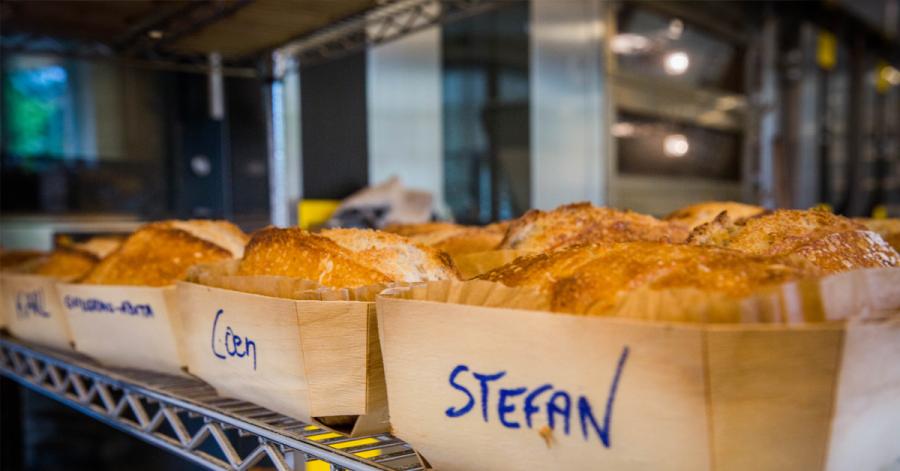Bakers that become their bread
Last summer Puratos set out to understand whether the hands of bakers influence the bread they make. So Puratos set up an experiment in collaboration with Rob Dunn & Ann Madden from the North Carolina State University and asked bakers from 16 countries to make a sourdough, wherever they would ordinarily make a starter. Puratos sent the bakers a common flour that they were all to use. The bakers then made and fed their starter, keeping it alive until the 4th of July 2018, when all the bakers came together to the Puratos Center for Bread Flavour, to make bread.
The experiment
At the center the bakers’ hands were swabbed with a cotton swab; in the morning, after the bakers did whatever they usually do after waking up. Samples of the starters themselves were taken before and after they were fed. The next steps were laborious. DNA was extracted from the samples in the laboratory. We will spare you the details: some parts of this laboratory process were technically hard, but in short, we can tell you a lot could have gone wrong. But they didn’t, Hallelujah! The result is that for every little thing that got swabbed at the Center the researchers – Rob Dunn & Ann Madden - defined the species of fungi and bacteria that were present. They defined both the species that are readily cultured and those that aren’t.
Some first surprising results: a few highlights
The experimental results on the hands have been very surprising. A first highlight was a surprise about the hands of the bakers. Ordinary human hands tend to be covered in ordinary skin microbes. These microbes are beneficial for the most part, a layer of good life on which our health depends. Some people also have a few Lactobacillus bacteria on their skin. These Lactobacillus bacteria are often of the same sort found in sourdough bread. The researchers imagined they were on the hands both because the hands contact body parts that are more replete with Lactobacillus (vaginal and gut communities tend to be full of Lactobacillus bacteria) and because some of those Lactobacillus actually live on the hands. It was these Lactobacillus one imagined were getting into the starter, the magic contribution of the baker to every bread. Here was to be their first surprise. Compared to the average hand the hands of bakers were far more covered with Lactobacillus bacteria. The bakers had, in some very real way, become their bread. This was a surprise and Puratos will now have a whole series of subsequent studies in mind to figure out exactly how this happens.

The results on the starter: The question one really wanted to address though was whether the hands and their microbes were really influencing the starters the bakers could make. Here too some first result. For the bacteria the starters and hands appear to match. Many of the bakers had relatively similar starters, that might have been influenced by the bakers’ hands but seemed to have been influenced in the same way. The same microbes were passed from hands to microbes across multiple starters. But others of the starters were more unique in terms of those bacteria and in those starters the bacteria from the hands of the bakers and the bacteria from the starters were unique, and tended to match. In short, it seems that most bakers impart microbes to their bread when they make starters, but some bakers with really unique microbes on their hands impart more.
This though is just a beginning. Puratos will continue to study the results in collaboration with Rob Dunn & Ann Madden and who knows some other contributors, and try to provide some insight as to whether the bakers with the most unique hands and starters produced the most unique breads. Stay tuned.
